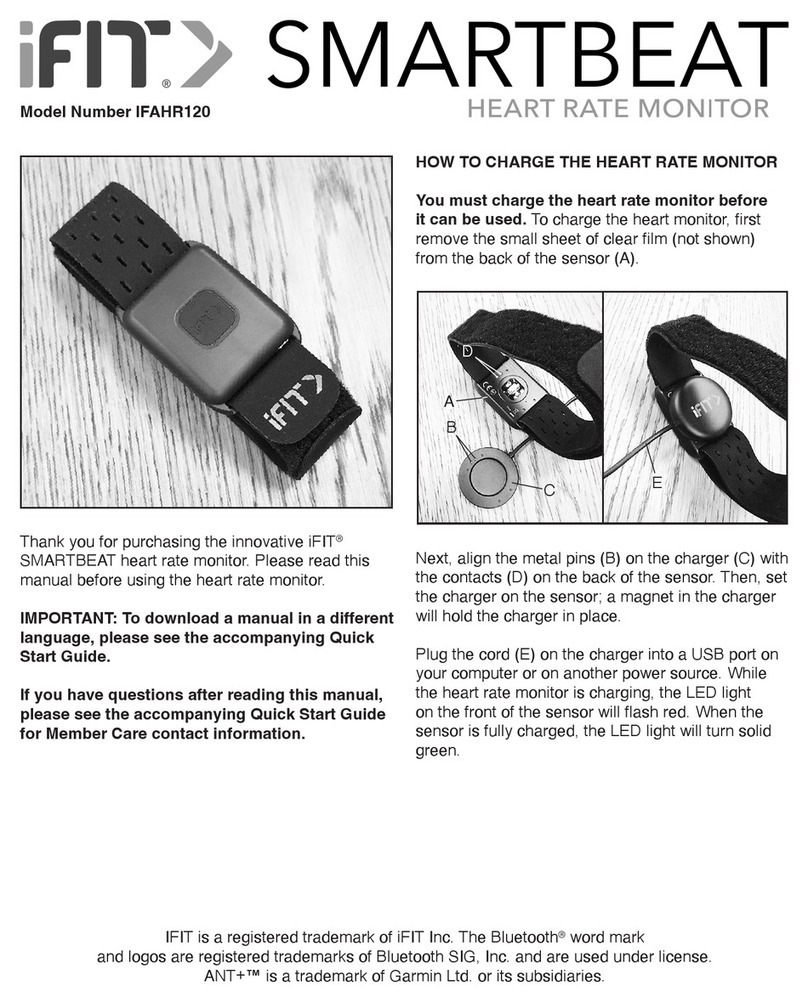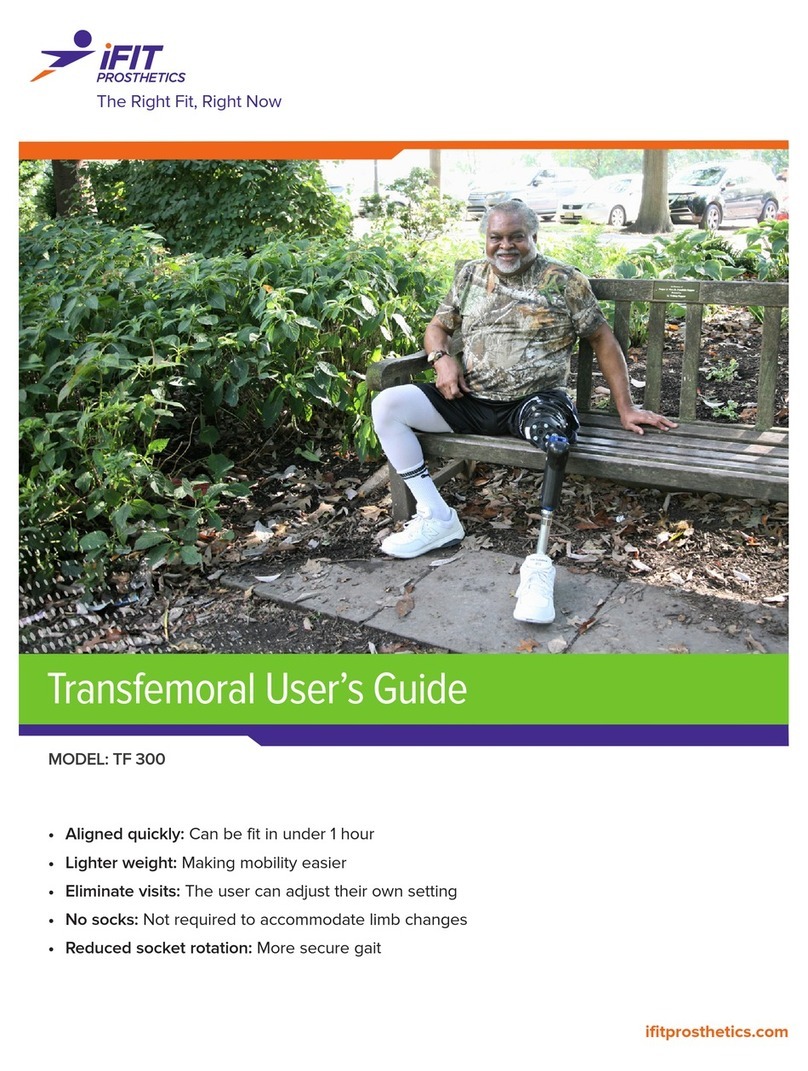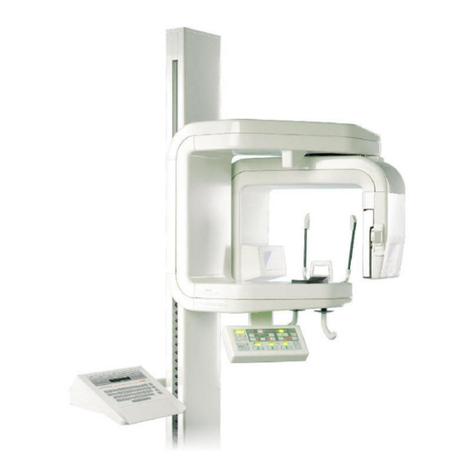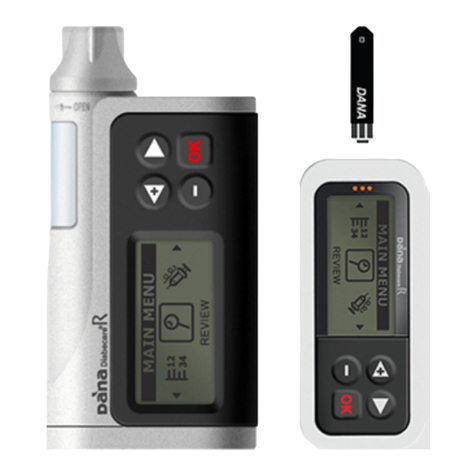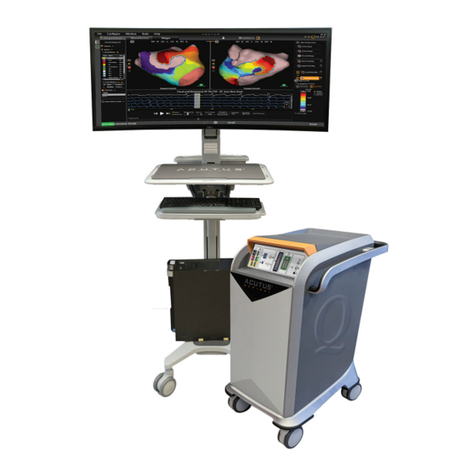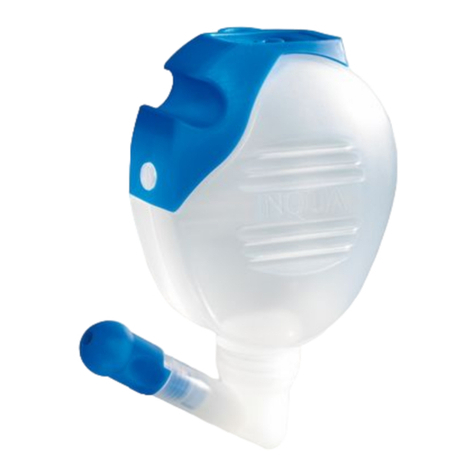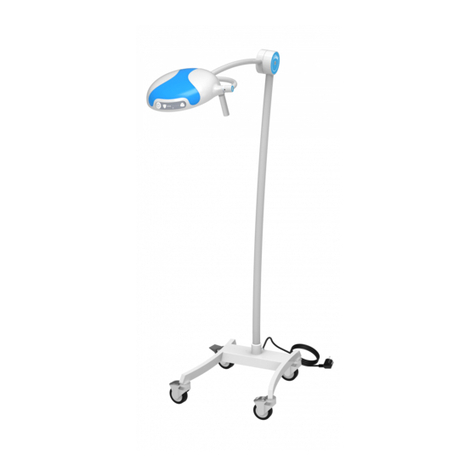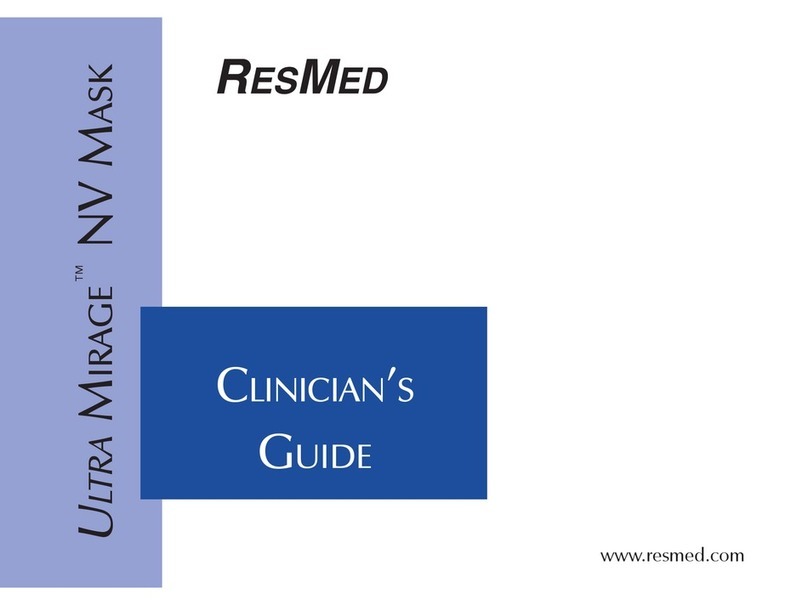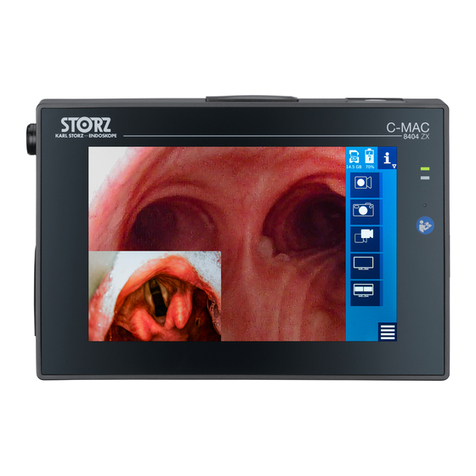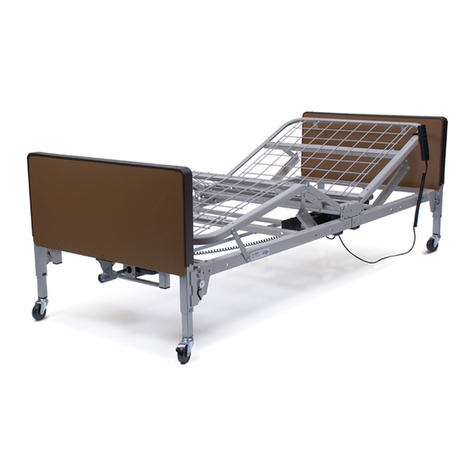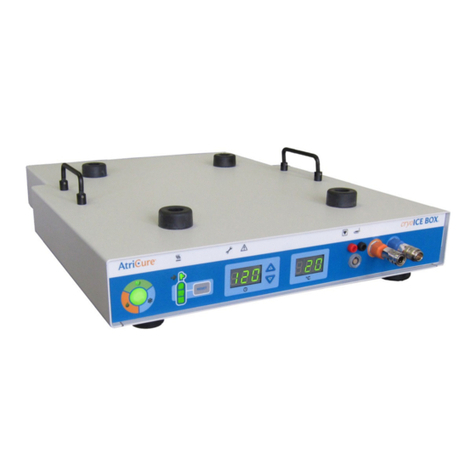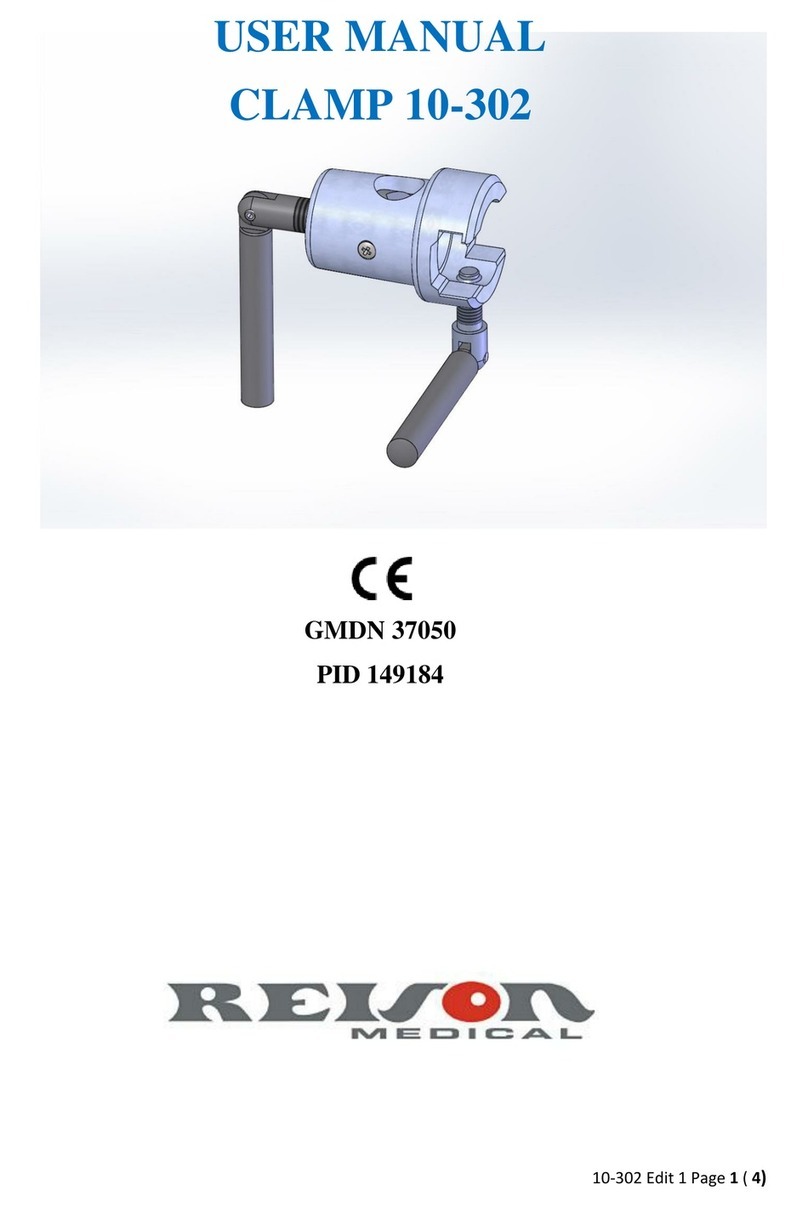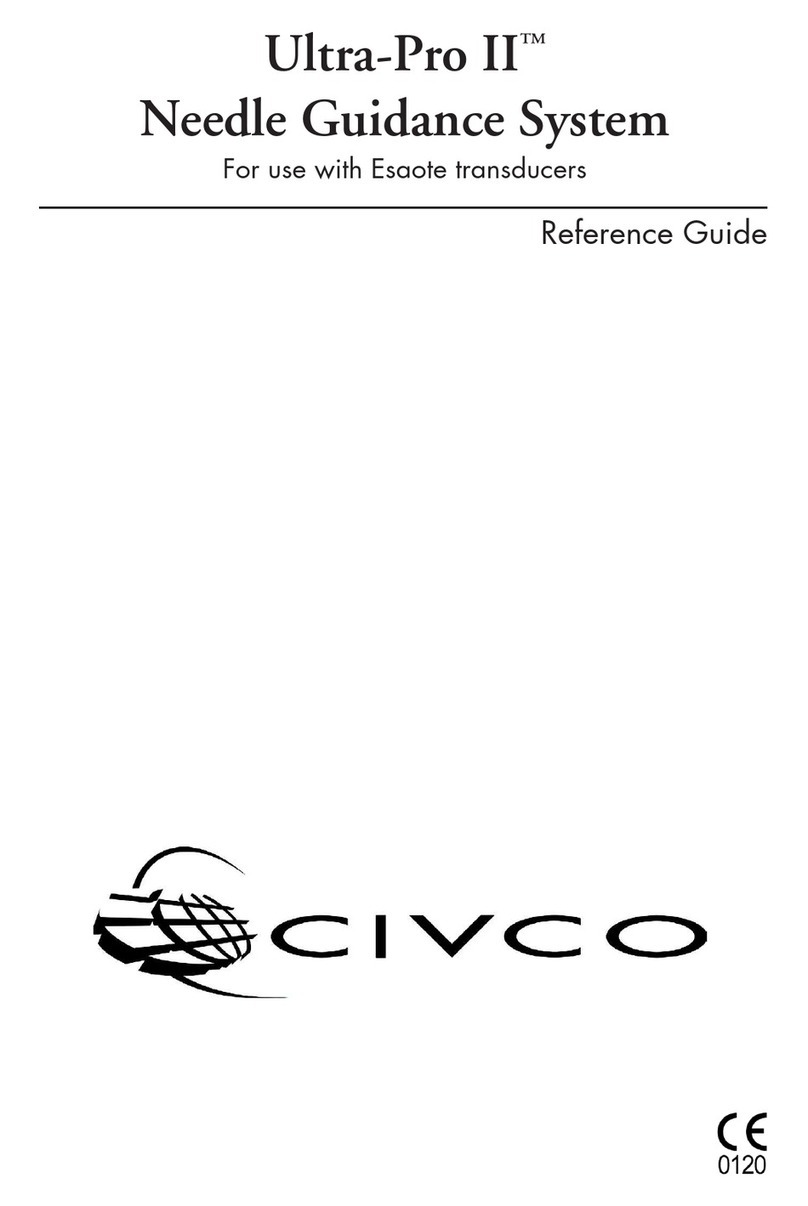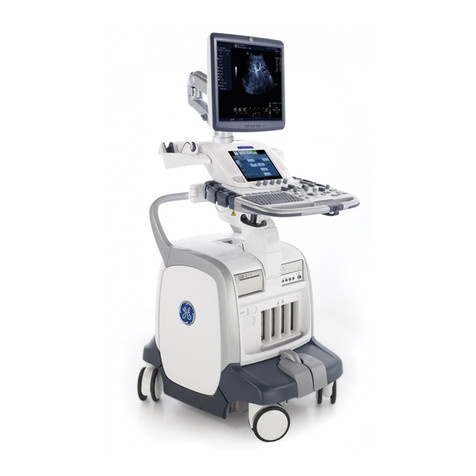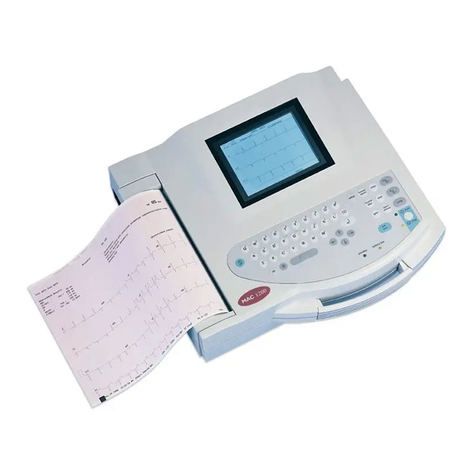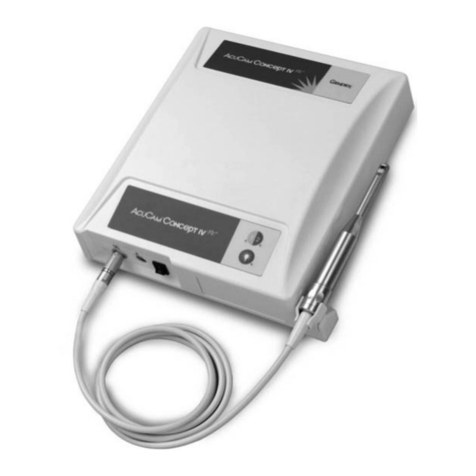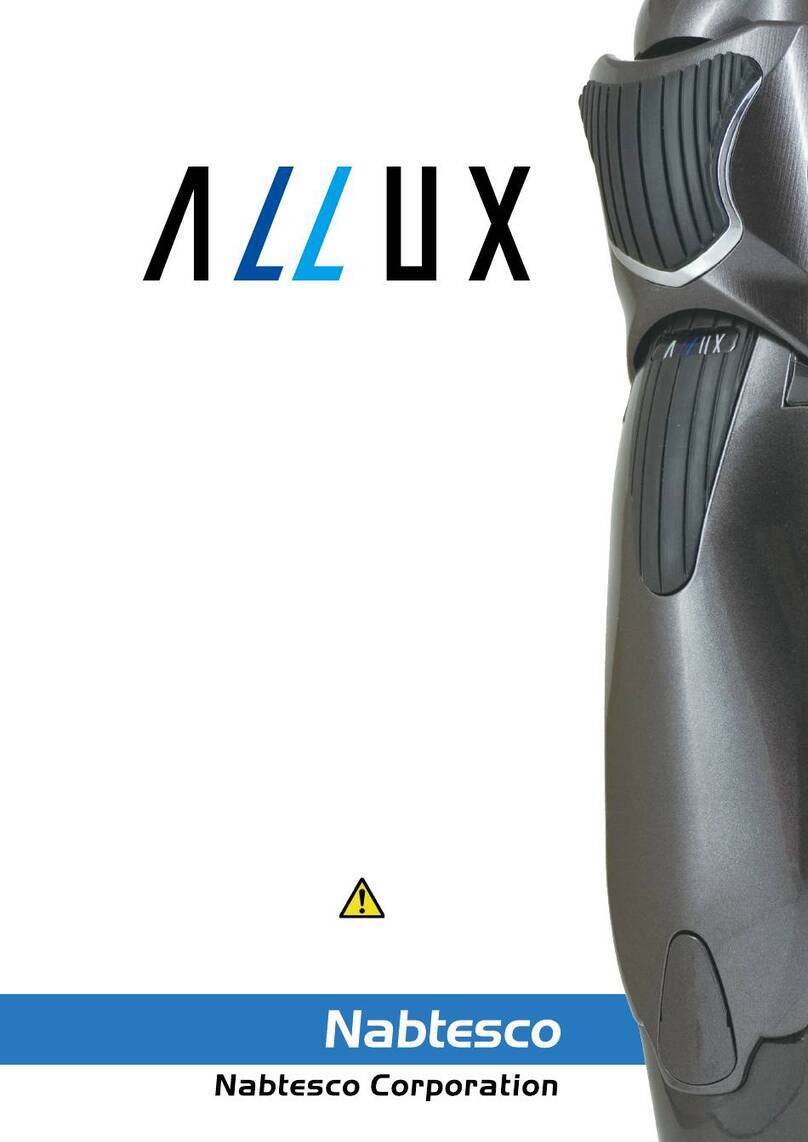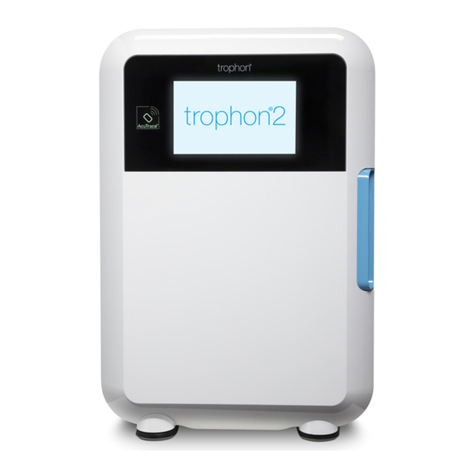iFIT TT200 User manual

Patient User’s Guide
MODEL: TT200
www.iFitProsthetics.com
The Right Fit, Right Now

Table of Contents
Section I • Introduction 5
Warnings 6
Section II • iFIT Prosthesis Components 10
Section III • Instructions 11
Step A: Initial Device Check 11
Step B: Putting on the Device 12
Step C: Taking off the Device 14
Step D: Cleaning and Maintenance 14
Secton IV • Wear Schedule 16
Get the right fit today.
A prosthetic device for whatever your day
brings. Thank you for trying iFIT!
One-Stop Fitting
for Nonstop Living

5
Section I • Introduction
Congratulations on obtaining your new iFIT transtibial prosthesis.
We hope you will enjoy the comfort and adjustability of the device.
Years of research and development have gone into the design of this
prosthesis so that we could provide for you the best possible product.
Below you will find a series of instructions which are essential to follow
in order to get the best results from your prosthesis and prevent any
problems. We strongly suggest using the wear schedule on page 16
so you can check your residual limb and gradually adjust to the device.
Even though the iFIT Prosthesis is designed to be easily fit and aligned
we recommend that only an iFIT certified prosthetist adjust and fit this
device for you.
Thank you for choosing iFIT Prosthetics!
“It feels like I’m walking on a pillow!”
“iFIT comes in handy when my stump goes through a hard day’s work and there’s
some swelling, which causes pressure in a conventional solid socket. Since the iFIT
is adjustable, it’s perfect for times like that—especially after hiking or running.”
“The inside padding prevents rubbing and irritation—
you’re really onto something here!”
WHAT FIRST-TIME WEARERS ARE SAYING:
The Right Fit, Right Now

6 7
• The prosthesis must fit snuggly and comfortably around your leg to work
properly. Loosening the buckles too much may alter walking and lead to falls.
• The iFIT transtibial prosthesis is not designed for vigorous activities
such as running.
• If there is pain in the limb, reduce the tightness of the buckle one notch.
Buckling too tight may cause excess pressure or reduce blood flow to the limb.
If the pain continues despite loosening the buckle, take it off and contact
your prosthetist.
• Only a certified iFIT prosthetist may fit and align this device.
• Do not wear the prosthesis without a protective silicone locking liner (with pin)
which is supplied by your healthcare provider.
• If the inner black neoprene liner of the prosthesis becomes worn, it should be
replaced with a new one.
• Do not rest or sleep with the prosthesis against your opposite leg. Doing so
may cause skin irritation or breakdown.
As with any prosthesis there are always potential problems that may arise. It is
important that you use the iFIT Prosthesis exactly as described in this guide.
Failure to do so may result in one or more of the following problems:
1. Prosthetic failure.
2. Residual limb skin breakdown.
3. Pain in residual limb with use of the prosthesis.
4. Risk of fall while using the prosthesis.
5. Reduced circulation (blood flow) to a limb if it is buckled too tightly.
IF YOU HAVE ANY CONCERNS WITH YOUR PROSTHESIS PLEASE
CONTACT YOUR IFIT PROSTHETIST FIRST.
PATIENT ADVISORY WARNINGS
We hope you are pleased with your new iFIT Prosthesis. Your iFIT prosthetist will
select the other components that accompany the socket according to your body
weight and activity level. These include the silicone pin suspension liner and
prosthetic foot. If your weight or activity level changes, or if your prosthesis
becomes less comfortable, please notify your healthcare provider.
The prosthetic socket must be securely buckled at all times when you are standing
or walking. The buckles must be completely closed so that the locking mechanism
prevents them from opening. Your limb must be completely in the socket and the
pin suspension system fully engaged − you should not be able to pull the device
off of your limb.
It should be comfortable to wear. If you have any discomfort, alert your iFIT
prosthetist. The healthcare provider will test your ability to use the device while
in their clinic to ensure you can use it safely and properly.
To minimize the chances of any problems occurring, this prosthetic device has
undergone extensive engineering testing by iFIT Prosthetics. There is a soft inner
liner that pads the socket protects the skin. You should always wear a silicone
locking liner (this is the liner with a pin attached) with a pin that is compatible
with the suspension in the device. This device was designed with a pin suspension
system for holding the prosthesis firmly onto your limb and will not work with other
types of suspension such as suction or suprapatellar straps.
You must carefully follow the directions of your iFIT prosthetist and the
instructions contained in this brochure. Failure to do any of the following could
result in tripping and falling, device failure, skin breakdown, or cause other
serious harm.
• The pin attached to the silicone locking liner should be fully inserted into the
bottom of the socket prior to use. Check to see that the socket does not pull
off once you engage the pin. You will hear a clicking noise as the pin locks
into the locking mechanism.
• Be sure to check that the prosthesis is firmly attached to your limb.
• If your silicone liner is worn out replace with one prescribed by your healthcare
provider that works with the iFIT prosthesis system.
• Do not stand or walk without buckling both buckles and checking to ensure
that they are locked.
• Do not make adjustments to the buckles while standing. Sit down and then
make any buckle adjustments.

By using the iFIT transtibal prosthesis you also agree that in no event shall iFIT
be responsible for any direct, indirect, consequential, incidental or special losses,
damages or liabilities, including without limitation medical expenses, lost wages
and lost profits, arising out of any such risks, and you waive, release and agree
not to hold iFIT responsible for any and all such losses, damages or liabilities. If,
notwithstanding the foregoing, iFIT is determined by any court of law with jurisdic-
tion to be liable for any such damages, regardless of whether such liability arises in
contract, tort (including, without limitation, negligence or strict liability) or otherwise,
by using the iFIT transtibal prosthesis you further agree that the amount of the loss-
es, damages or liabilities shall in no event exceed the amount paid by you for the
prosthesis. By using the iFIT transtibal prosthesis, you waive, release and agree
not to hold iFIT responsible for any and all losses, damages or liabilities in excess
of that amount.
9
Legal disclaimer:
iFIT warranties that the iFIT transtibal prosthesis sold to you will be free from man-
ufacturing defects for a period of one (1) year from your purchase of the prosthesis
provided you have fully complied with all use and care instructions contained in
this user guide. Parts covered under the warranty include the sockets, buckles and
locks. Cables and inner liners are not included in the warranty. Any iFIT transtib-
ial prosthesis which you allege to be defective (including any sockets, buckles or
locks you allege to be defective), despite your full compliance with all such use and
care instructions, may be returned by you to the prosthetist who sold the prosthesis
to you within one (1) year of your purchase of the prosthesis. Upon timely return
of such prosthesis (or sockets, buckles or locks, as applicable), and provided iFIT
confirms that the prosthesis (or sockets, buckles or locks, as applicable) included
a manufacturing defect (and that any defect was not due to your failure to comply
with all such use and care instructions), iFIT shall repair or replace the prosthesis
(or sockets, buckles or locks, as applicable). By using the iFIT transtibal prosthesis,
you agree that the foregoing repair or replacement obligation is the only obligation
iFIT has to you relating to any defective prosthesis (including sockets, buckles or
locks), and that this limited warranty and obligation is in lieu of all other warranties
or obligations, express or implied, oral or written, including the implied warranties
of merchantability and fitness for a particular purpose, all of which are hereby
waived. By using the iFIT transtibal prosthesis you also agree that other than iFIT’s
repair or replacement obligation set forth herein, in no event shall iFIT be respon-
sible for any direct, indirect, consequential, incidental or special losses, damages
or liabilities, including without limitation medical expenses, lost wages and lost
profits, arising out of any such manufacturing defect and you waive, release and
agree not to hold iFIT responsible for any and all such losses, damages or liabili-
ties. If, notwithstanding the foregoing, iFIT is determined by any court of law with
jurisdiction to be liable for any such damages, regardless of whether such liability
arises in contract, tort (including, without limitation, negligence or strict liability) or
otherwise, by using the iFIT transtibal prosthesis you further agree that the amount
of the losses, damages or liabilities shall in no event exceed the amount paid by
you for the prosthesis. By using the iFIT transtibal prosthesis, you waive, release
and agree not to hold iFIT responsible for any and all losses, damages or liabilities
in excess of that amount.
8

10 11
Section II • iFIT Prosthesis Component Guide
2) When checking the silicone locking
liner (with pin), always make sure the
pin is secured and not loose. This liner
should be rolled onto the residual limb
without any gaps or air bubbles at the
end. Make sure the pin sticks out direct-
ly below the limb and that it is not angled
in one direction.
3) The prosthesis liner should be
securely placed in the prosthetic
socket, with the liner reaching the
bottom of the socket. Make sure the
liner is not wrinkled or folded down
into the prosthesis.
4) The outer flap of the prosthesis
should have the cable guides with
the cables passing through it and
attaching to the hooks. The inner
flap is smooth and slides under the
outer flap.
Section III • Instructions
STEP A: INITIAL DEVICE CHECK
1) It is important to check your
device every day prior to putting it
on. No screws should be loose, and
there should be two cables along
the back.
Please use this guide in any communications regarding your prosthe-
sis. This will help the prosthetist and the manufacturing company when
responding to any questions you may have.
Socket
Pylon clamp
adapter
Pylon with
bonded adapter
Cable Guide
Padded Liner
Cable Hook
Cup
Safety
latches
Buckle
Pyramid adapter
with hole
Release button for
pin suspension

12 13
1) Place your residual limb in the prosthe-
sis so that the pin goes through the hole
in the bottom. Make sure the pin engages
the lock. You will hear a clicking noise
when the pin engages.
You should ensure that the pin is firmly
engaged by trying to push the prosthesis
off your leg. If it is properly engaged, the
prosthesis will not pull off. Do not use the
prosthesis if it is not firmly attached.
4) With your hands outside of the buckle
lever, pull closed until the safety is latched.
Begin at the top and then repeat on
the bottom.
Do not stand before fully buckling
both buckles and checking to be sure they
are locked and cannot be accidentally
opened.
3) Secure the prosthesis by placing the
end of the top cable into one of the top
hooks of the prosthesis (this should be
marked off by the healthcare provider).
You may need to start looser and then
gradually tighten the cables by buckling
and re-buckling until the optimal hook is
reached.
The prosthesis can be loosened or tightened anytime by moving the
cable 1 hook at a time. Always make adjustments while seated.
STEP B: PUTTING ON THE DEVICE
2) Make sure the inner
flap is under the outer flap
which has the cable guide,
or the prosthesis will not
buckle correctly. Doing so
may also cause breakage.
Also, make sure the inner
neoprene liner stays in
place and does not wrinkle
or fold into the prosthesis
when putting it on, this may
cause discomfort.
Correct XIncorrect
5) Make sure the cable is not hooked over the buckle as shown in picture
A. This can cause excess wear on the cable. To prevent the cable from
catching, the buckle can be shifted up or down as shown in picutre B.
A. B.
6) Always check that the buckles are
securely fastened by checking that
the safety latch is engaged.

14 15
1) Begin in a seated position. Press
the safety latch on the buckle rearward in
order to lift the buckles and unbuckle
the cables.
1) Follow the manufacturer’s directions
for cleaning the silicone locking liner.
Make sure to clean the silicone part which
contacts the skin every day with soap and
water to prevent infection.
7) Once buckled, stand up to test out the
tightness. If too tight or too loose, return
to a seated position, and move the buckle
either one notch forward or one back for
adjustment.
If the socket causes pain when
buckled contact your healthcare provider.
2) The padded inner liner may be taken
out and washed on a gentle cycle then
air dried. It is very important you do not
put the liner in the drier as high heats may
cause damage.
3) When replacing the liner back into the
prosthesis, make sure it is properly aligned
with the prosthesis.
If the liner starts to show any signs of wear,
a replacement should be ordered.
4) Check your cables periodically to make
sure they are not fraying.
If any issues arise, make sure to contact your prosthetist.
Most issues may be resolved by adding padding in an area or making
an alignment adjustment.
We hope you enjoy your new iFIT Prosthesis!
2) Next, press the clutch release button
located on the front of the device to disen-
gage the pin. The limb should easily slide
out of the prosthesis.
STEP C: TAKING OFF THE DEVICE
STEP D: CLEANING AND MAINTENANCE

Appendix A • Wear Schedule
16
If pain develops loosen the prosthesis one notch. If pain does not
decrease, discontinue use and contact your prosthetist.
Please report any injury or skin problem immediately to your prosthetist
and discontinue use of it until you can be re-evaluated by your
prosthetist.
DAY 1 Wear 2 hours Check limb. If no issues... Wear 2
Keep off for additional hours
5 minutes.
DAY 2 Wear 3 hours Check limb. If no issues... Wear 3
Keep off for additional hours
5 minutes.
DAY 3 Wear 4 hours Check limb. If no issues... Wear 4
Keep off for additional hours
5 minutes.
DAY 4 Wear 5 hours Check limb. If no issues... Wear 5
Keep off for additional hours
5 minutes.
DAY 5+ Wear as tolerated. Check every few hours to assess residual limb
or if you have any discomfort. Check limb if any discomfort occurs.

Our mission is to produce high quality,
aordable prosthetic devices that enhance
the lives of persons with amputations.
iFIT Prostheticsis a proud, veteran-owned
American business making products
in Milwaukee, WI.

Products mentioned herein are trademarks or registered trademarks of
iFIT Prosthetics, LLC. The products are protected by US patents 8470050,
8491667, and 8845755.
ifitprosthetics.com
N27 W23655 Paul Road • Pewaukee WI 53072
Table of contents
Other iFIT Medical Equipment manuals
